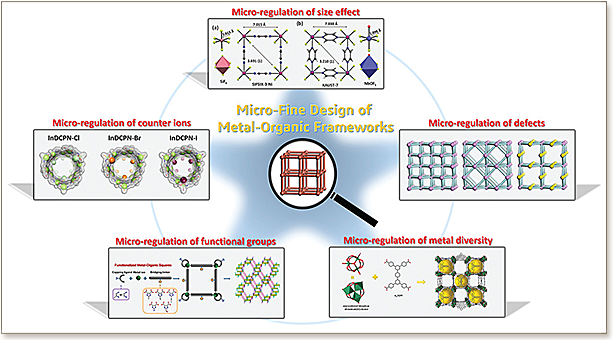

Metal–organic frameworks (MOFs) have emerged as an important and unique class of functional crystalline hybrid porous materials in the past two decades. Due to their modular structures and adjustable pore system, such distinctive materials have exhibited remarkable prospects in key applications pertaining to adsorption such as gas storage, gas and liquid separations, and trace impurity removal. Evidently, gaining a better understanding of the structure–property relationship offers great potential for the enhancement of a given associated MOF property either by structural adjustments via isoreticular chemistry or by the design and construction of new MOF structures via the practice of reticular chemistry. Correspondingly, the application of isoreticular chemistry paves the way for the microfine design and structure regulation of presented MOFs. Explicitly, the microfine tuning is mainly based on known MOF platforms, focusing on the modification and/or functionalization of a precise part of the MOF structure or pore system, thus providing an effective approach to produce richer pore systems with enhanced performances from a limited number of MOF platforms. Here, the latest progress in this field is highlighted by emphasizing the differences and connections between various methods. Finally, the challenges together with prospects are also discussed.
